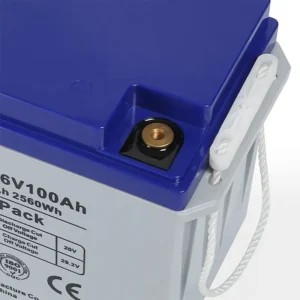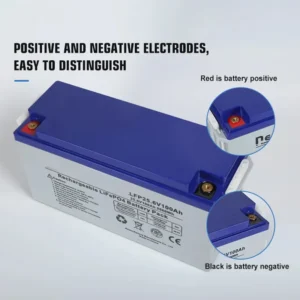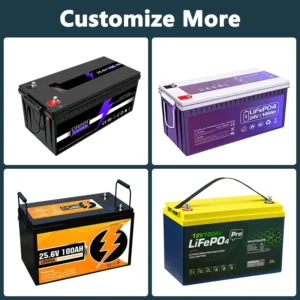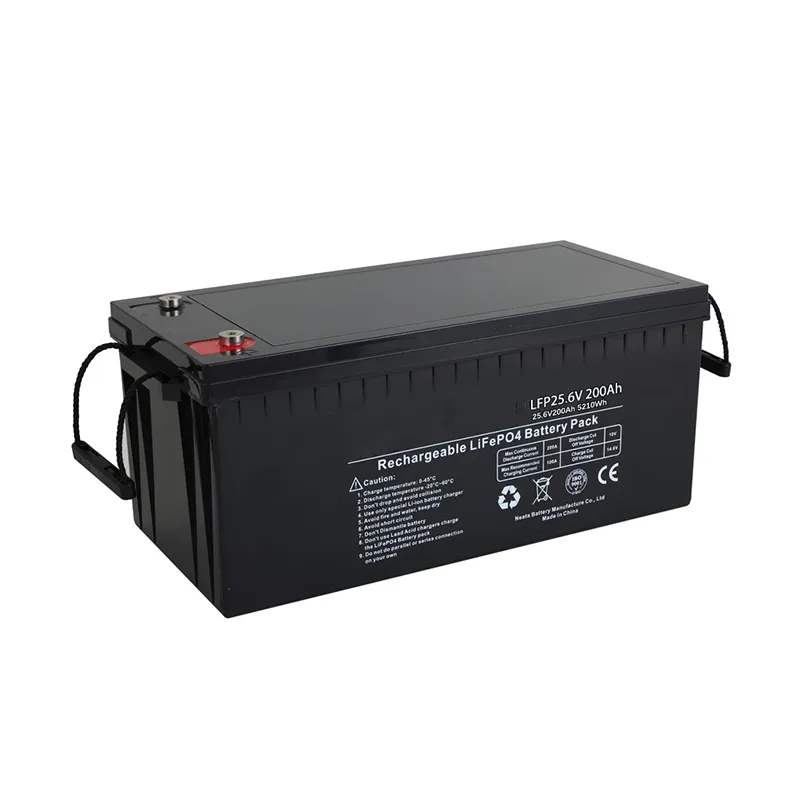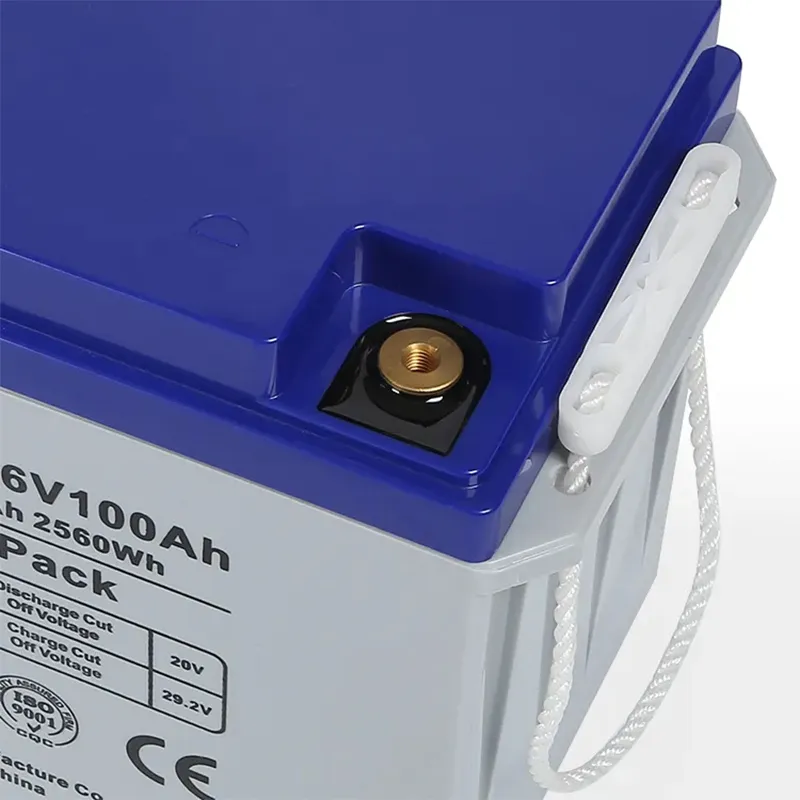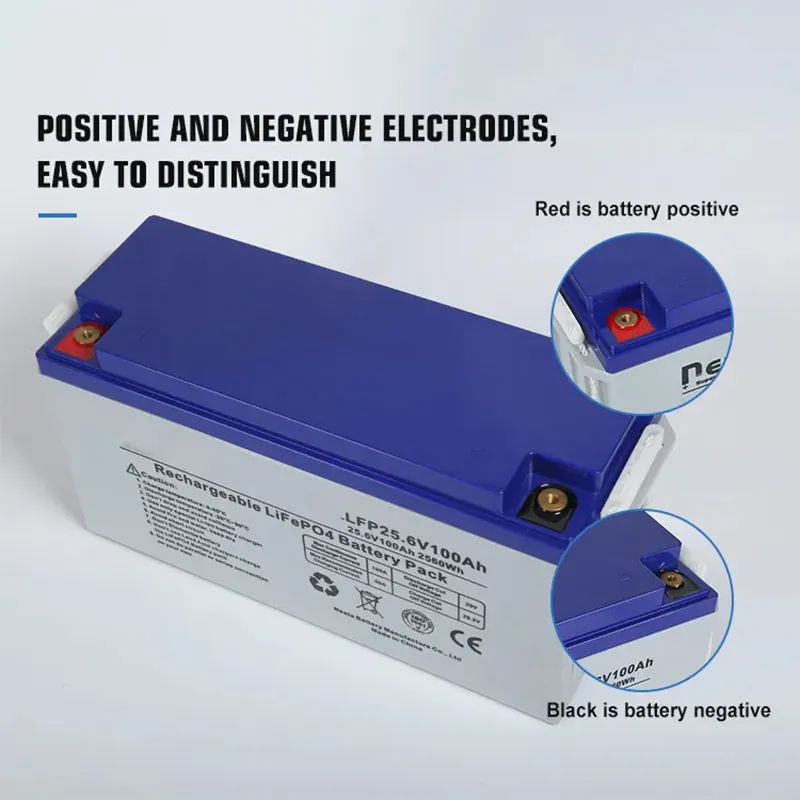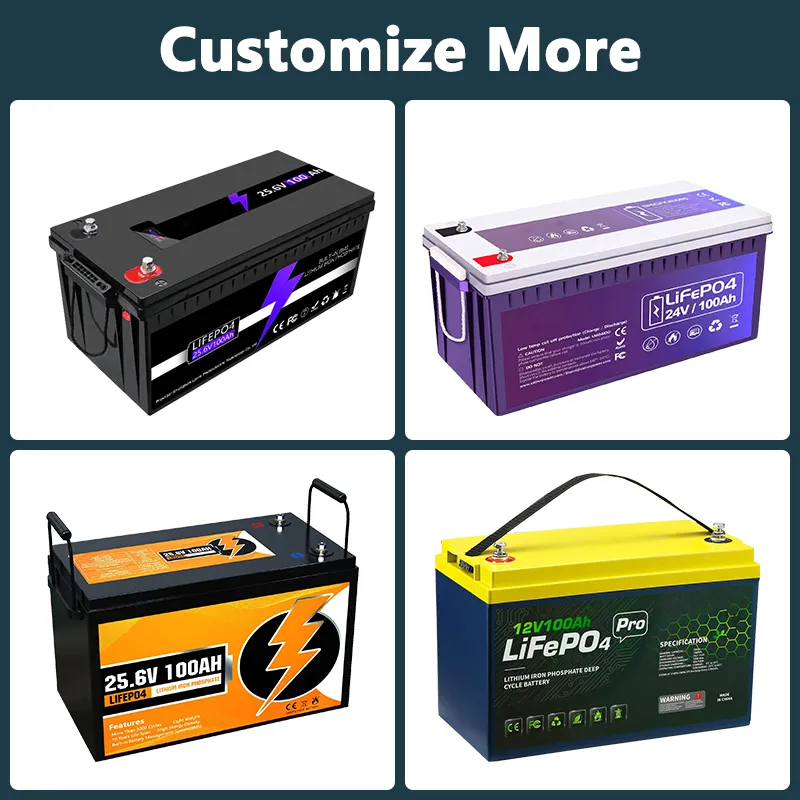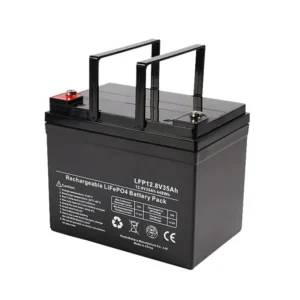25.6V 200Ah LiFePO4 Battery LFP24200
Features:
- 25.6V 200Ah LiFePO4 battery offers a large storage capacity for extended usage.
- Advanced Safety Features: Equipped with overcharge and over-discharge protection, ensuring safe operation.
- Long Cycle Life: Durable and long-lasting, it can withstand numerous charge and discharge cycles.
- Compact and Lightweight: High energy density allows for a compact and lightweight design.
Parameters
| Model | LFP24200 |
| Rated Capacity | 200Ah |
| Rated Voltage | 25.6V |
| Energy | 5120Wh |
| Standard Charge Current | 40A |
| Max. Charge Current | 150A |
| Charge Cut Off Voltage | 29.2V |
| Standard Discharge Current | 40A |
| Max. Continuous Discharge Current | 150A |
| Discharge Cut Off Voltage | 20V |
| Max. Pulse Discharge Current | 300A |
| Charge Temperature | 0 to 45ºC |
| Discharge Temperature | -20 to 60ºC |
| Storage Temperature | 0 to 40ºC |
| Dimension (L*W*H) | 483*400*133mm |
| Weight | 40kg |
CAN'T FIND WHAT YOU WERE LOOKING FOR?
FAQ
To calculate the kilowatt-hours (kWh) required to charge a battery, you need to consider the voltage of the battery and the charging efficiency. The formula to calculate kWh is as follows:
kWh = (Battery Voltage x Battery Capacity) / 1000
For a 25.6V 200Ah LiFePO4 battery, the calculation would be:
kWh = (25.6V x 200Ah) / 1000 = 5.12 kWh
So, it would take approximately 5.12 kilowatt-hours to charge a 200Ah battery at 25.6V.
The amount of battery capacity needed to go off the grid depends on several factors, including your energy consumption, the duration of time you want to be off-grid, and the availability of alternative energy sources. Here are some general considerations:
- Energy Consumption: Calculate your average daily energy consumption in kilowatt-hours (kWh). This includes the energy used by appliances, lighting, heating/cooling, and other electrical devices.
- Duration: Determine the number of days you want to sustain without grid power. Multiply your daily energy consumption by the number of days to get the total energy requirement.
- Efficiency and Energy Loss: Take into account the efficiency of your energy system, including the charging and discharging efficiency of the batteries, as well as any energy losses during conversion or storage.
- Renewable Energy Sources: Consider the availability of renewable energy sources like solar panels or wind turbines. These can provide a continuous supply of energy to recharge the batteries while off-grid.
- Battery Capacity: Select a battery capacity that can store enough energy to meet your calculated energy requirements. Typically, deep-cycle batteries like LiFePO4 are suitable for off-grid applications due to their high capacity and long cycle life.
It’s important to note that going off-grid requires careful planning and may involve a combination of renewable energy sources, energy-efficient appliances, and an appropriately sized battery bank to ensure a reliable and sustainable power supply. Consulting with a renewable energy professional can help you determine the specific battery capacity needed for your off-grid goals.
The decision to prioritize more solar panels or more batteries depends on your specific energy needs and goals. Here are some considerations:
- Energy generation: If you have ample sunlight and want to maximize energy generation, investing in more solar panels can be beneficial. This allows you to generate more electricity during the day, which can directly power your needs or charge your batteries.
- Energy storage: If you frequently experience periods of low sunlight or want to store excess energy for use during the night or cloudy days, having more batteries is important. It enables you to store a larger amount of energy generated by your solar panels for later use.
- Autonomy and backup power: If you prioritize being self-sufficient or having backup power during grid outages, having more batteries is essential. It allows you to have a larger capacity to store energy, ensuring a longer duration of backup power when solar generation is limited.
- Cost considerations: Solar panels are typically more cost-effective compared to batteries. If you have budget constraints, investing in more solar panels initially and adding batteries later can be a practical approach.
In summary, finding the right balance between solar panels and batteries depends on your energy needs, available sunlight, and desired level of autonomy. It’s advisable to consult with a solar energy professional to assess your specific situation and design a system that meets your requirements.
The number of solar batteries needed to power a house depends on various factors such as energy consumption, daily sunlight hours, battery capacity, and backup power requirements. To determine the exact number, it’s recommended to conduct an energy audit of the house, assess the daily energy usage, and consider the desired autonomy (number of days the batteries should provide power without sunlight). This information will help determine the appropriate battery capacity and quantity to meet the specific needs of the house. It’s advisable to consult with a solar energy professional for a more accurate assessment.


